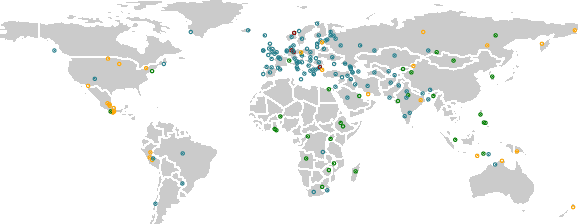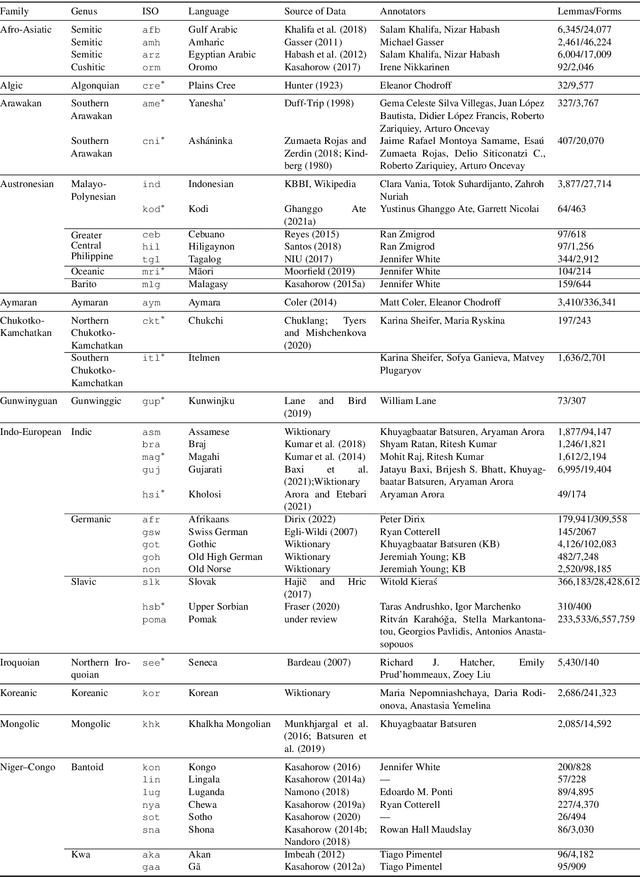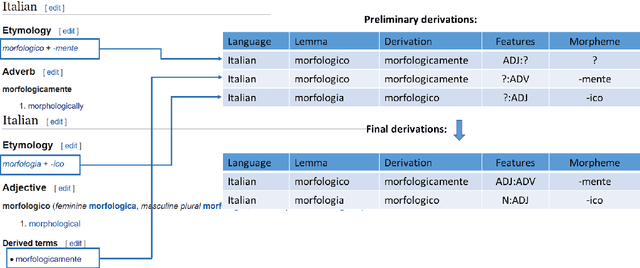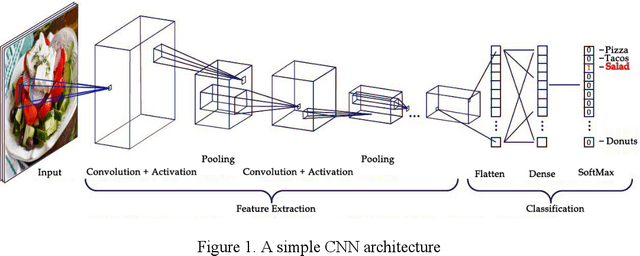Stella Markantonatou
UniMorph 4.0: Universal Morphology
May 10, 2022



Abstract:The Universal Morphology (UniMorph) project is a collaborative effort providing broad-coverage instantiated normalized morphological inflection tables for hundreds of diverse world languages. The project comprises two major thrusts: a language-independent feature schema for rich morphological annotation and a type-level resource of annotated data in diverse languages realizing that schema. This paper presents the expansions and improvements made on several fronts over the last couple of years (since McCarthy et al. (2020)). Collaborative efforts by numerous linguists have added 67 new languages, including 30 endangered languages. We have implemented several improvements to the extraction pipeline to tackle some issues, e.g. missing gender and macron information. We have also amended the schema to use a hierarchical structure that is needed for morphological phenomena like multiple-argument agreement and case stacking, while adding some missing morphological features to make the schema more inclusive. In light of the last UniMorph release, we also augmented the database with morpheme segmentation for 16 languages. Lastly, this new release makes a push towards inclusion of derivational morphology in UniMorph by enriching the data and annotation schema with instances representing derivational processes from MorphyNet.
Deep learning approaches in food recognition
Apr 08, 2020



Abstract:Automatic image-based food recognition is a particularly challenging task. Traditional image analysis approaches have achieved low classification accuracy in the past, whereas deep learning approaches enabled the identification of food types and their ingredients. The contents of food dishes are typically deformable objects, usually including complex semantics, which makes the task of defining their structure very difficult. Deep learning methods have already shown very promising results in such challenges, so this chapter focuses on the presentation of some popular approaches and techniques applied in image-based food recognition. The three main lines of solutions, namely the design from scratch, the transfer learning and the platform-based approaches, are outlined, particularly for the task at hand, and are tested and compared to reveal the inherent strengths and weaknesses. The chapter is complemented with basic background material, a section devoted to the relevant datasets that are crucial in light of the empirical approaches adopted, and some concluding remarks that underline the future directions.
 Add to Chrome
Add to Chrome Add to Firefox
Add to Firefox Add to Edge
Add to Edge